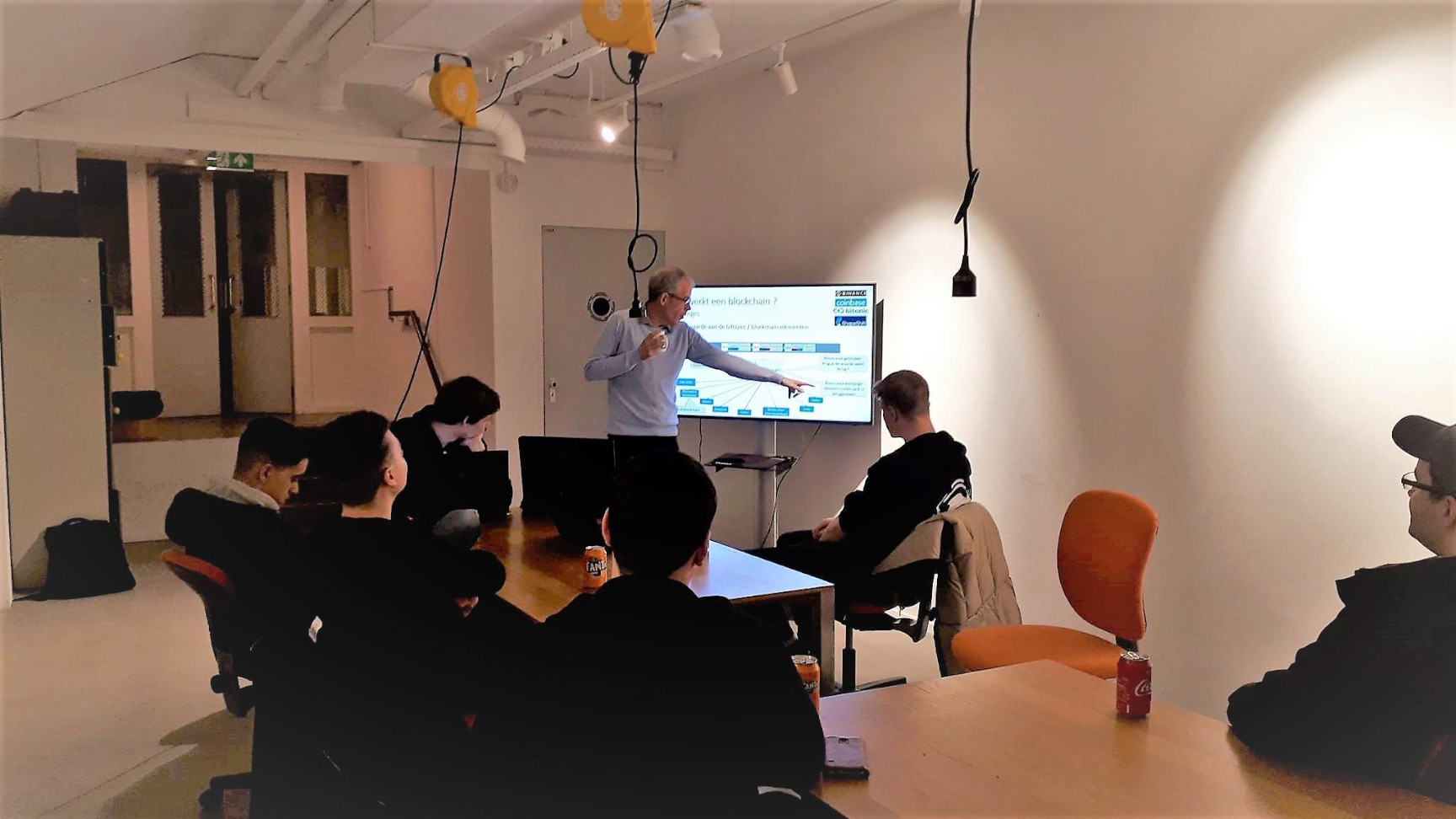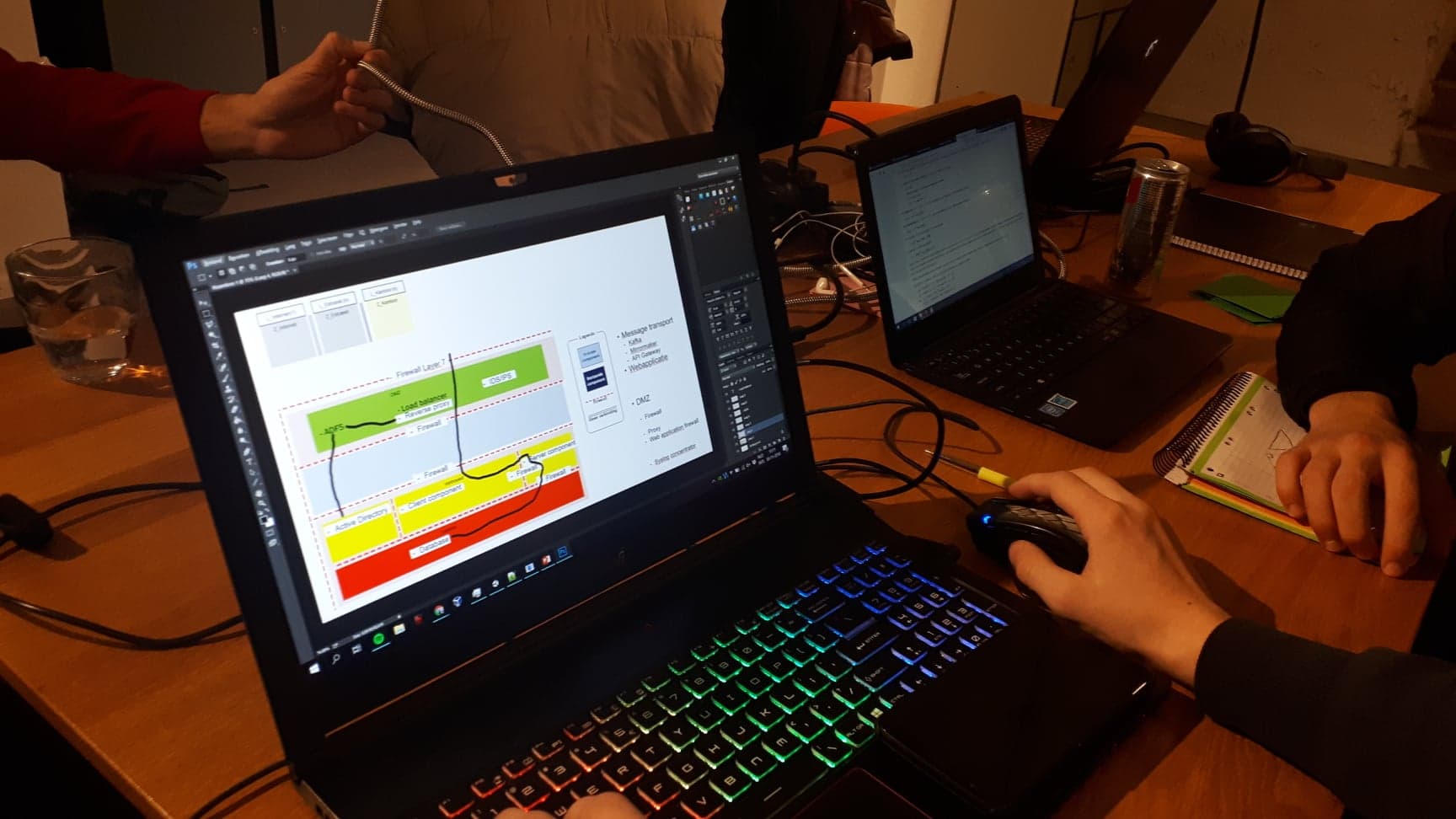Today Gerard L.A. Persoon gave a lecture on how blockchains work and what you can do with them.

A blockchain is, as the name implies, a chain of digital “blocks” of data. A block is composed of three parts:
- Data: Different types of blockchains store different types of data. For instance, a Bitcoin blockchain stores details about financial transactions
- Hash: each block has a unique hash. A hash is a unique identifier for each block, sort of like a fingerprint. When the data inside a block changes, a new block is created, as is a new hash.
- Hash of the previous block: this is why these blocks are described as being in a “chain”; because every block is “chained” to the previous block. The only block that does not have this element is the first block in a chain, as there is no previous block to refer to.
The fact that blocks of data are stored in a “chain” is partially what makes them harder to hack into than other forms of data storage. This is because if you tamper with one block (thus changing its data and its hash), all the subsequent blocks become invalid because they contain the hash of the previous, unhampered block. This means a hacker will probably be caught if they attempt to tamper with data in a blockchain. Although new hashes for the subsequent blocks could be created to unlock the data in the subsequent blocks, so a hacker could avoid being detected, this process is purposefully made very slow by what is called the “proof of work” mechanism.
Sources: How does a blockchain work– Simply Explained, Blockchain security: What keeps your transaction data safe?




